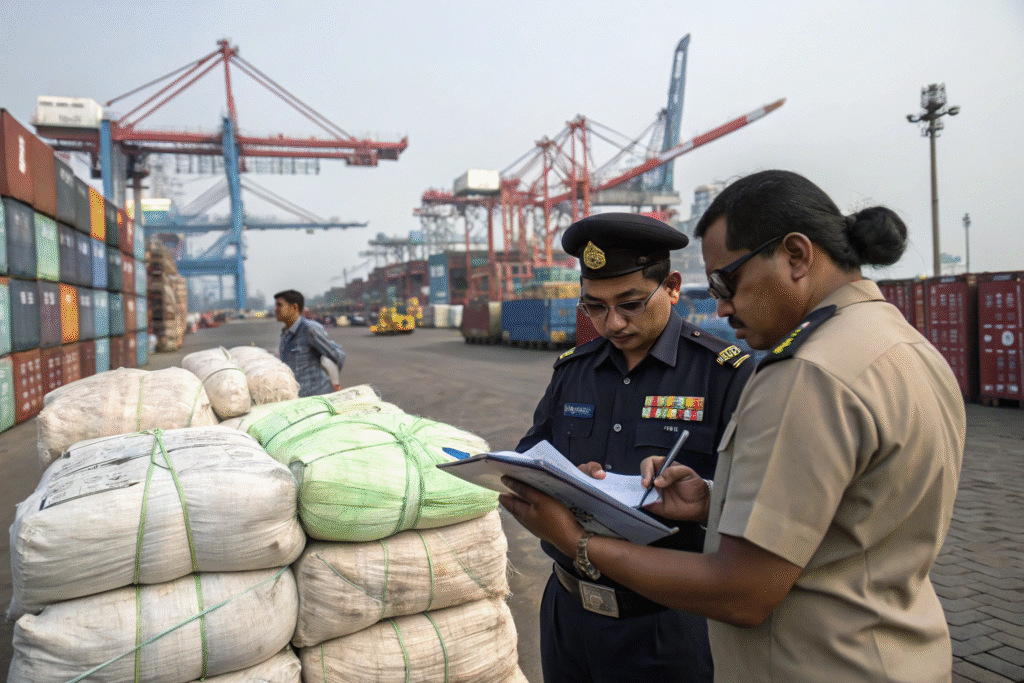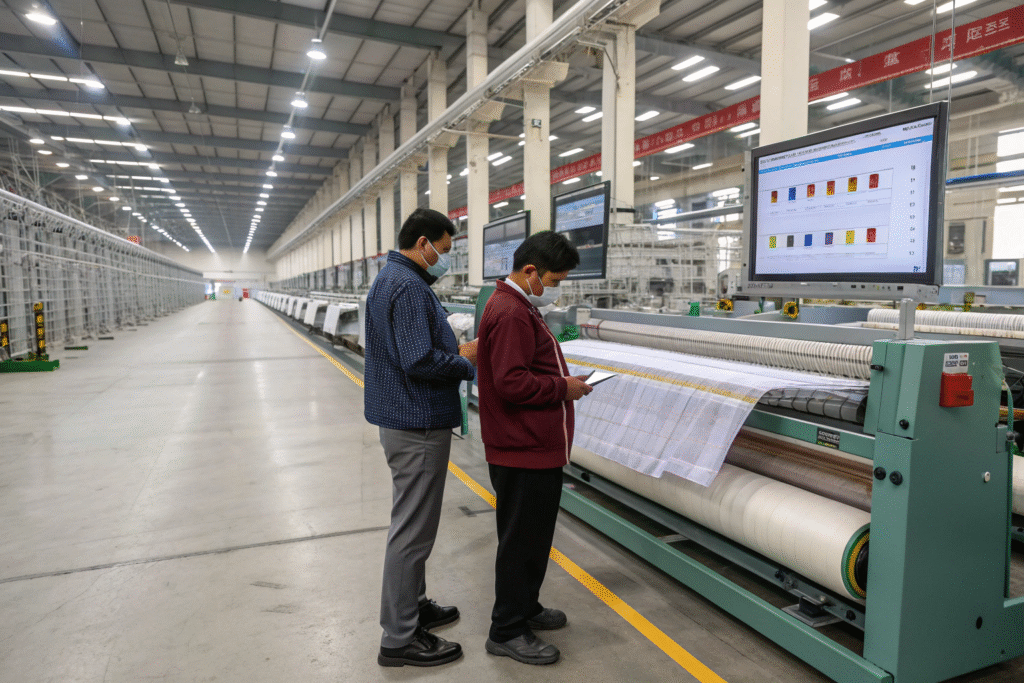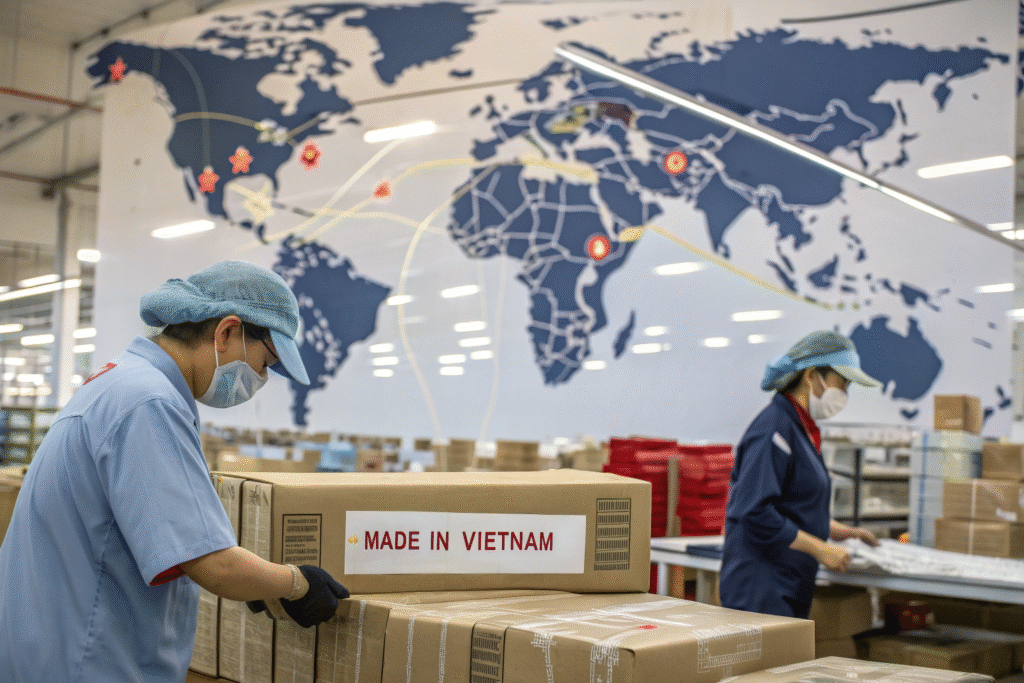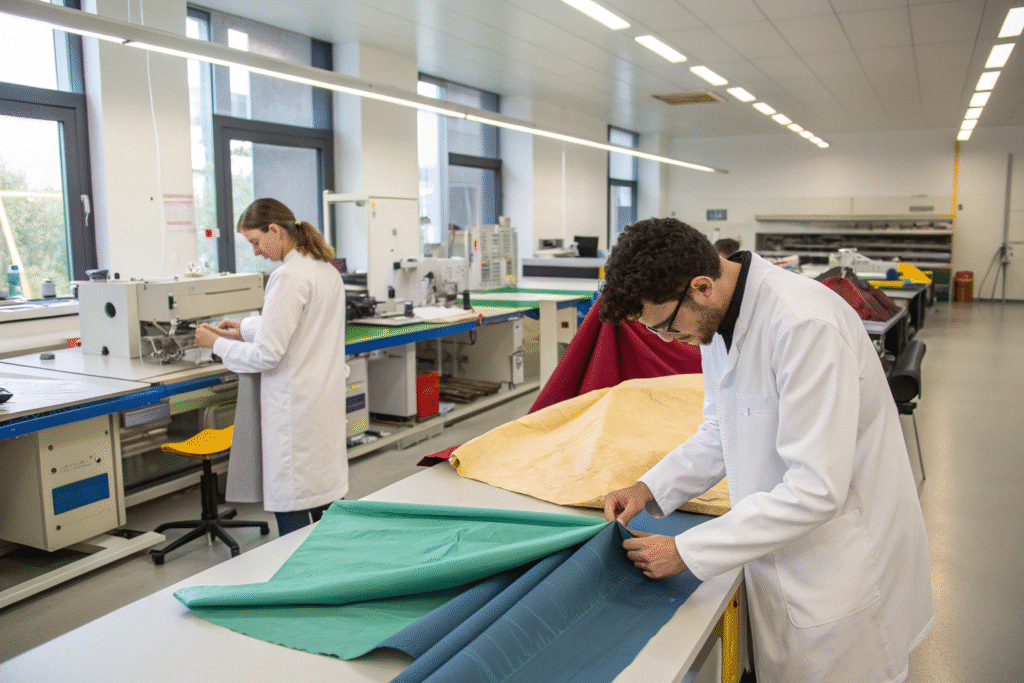What Are the Current US Tariff Barriers?

How Do China-Specific Tariffs Limit Direct Exports?
Despite temporary reductions, China faces significant barriers:
- Section 301 tariffs averaging 7.5% on $300B+ goods
- Uyghur Forced Labor Prevention Act (UFLPA) blocking Xinjiang cotton
- Countervailing duties up to 543% on specific categories
| Recent adjustments: | Period | Cotton Fabric Tariff | Status |
|---|---|---|---|
| May-Aug 2025 | 30% | Temporary reduction | |
| Post-Aug 2025 | 145% | Expected reinstatement |
These make direct shipments uncompetitive versus ASEAN partners with 0-20% duties.
What Exceptions Exist for Chinese Textiles?
Some workarounds remain:
- Traceable non-Xinjiang cotton: Using US/Brazilian-sourced cotton
- Technical textiles: Functional fabrics exempt from UFLPA
- De minimis shipments: Under $800 value via express carriers
Our CNAS lab certifies supply chains for CBP compliance.
How Do Chinese Clusters Compare to Indian Production?

Where Does China Lead in Manufacturing Capabilities?
Three key advantages:
- Vertical integration: From yarn to finished fabric in one cluster
- Speed: 30-day production vs. India's 60-90 days
- Innovation: AI-driven R&D in technical textiles
| Specific strengths: | Capability | Keqiao Cluster (China) | Tiruppur Cluster (India) |
|---|---|---|---|
| MOQ Flexibility | 500+ yards | 5,000+ yards | |
| Eco-Certifications | 15+ including GOTS | Limited | |
| Digital Integration | VR showrooms, IoT tracking | Basic e-commerce |
What Challenges Remain for Chinese Suppliers?
Persistent disadvantages:
- Higher labor costs ($600 vs India's $350/month)
- Complex customs clearance procedures
- Limited GSP benefits unlike competitors
Our bonded warehouses mitigate some delays through pre-clearance systems.
What Strategies Bypass US Tariffs?

How Effective Is ASEAN Rerouting?
Common approaches:
- Partial processing: Ship fabrics to Vietnam for final assembly
- Bonded transshipment: Use Malaysia as intermediary
- Origin blending: Mix Chinese materials with regional inputs
| Cost comparison (20GP container): | Route | Base Cost | Tariff Added | Total |
|---|---|---|---|---|
| Direct China-US | $2,100 | $8,400 | $10,500 | |
| China-Vietnam-US | $3,300 | $1,650 | $4,950 |
Requires strict rules of origin compliance.
Which Products Qualify for Duty Exemptions?
Tariff-free opportunities:
- Medical textiles: PPE and healthcare fabrics
- Recycled content fabrics: >50% rPET
- Smart textiles: Embedded electronics
Our R&D team developed 42 tariff-exempt fabrics last quarter.
What Niche Markets Can China Capture?

Where Do Technical Textiles Provide Edge?
Growing segments:
- Protective fabrics: Fire-resistant Nomex blends
- Eco-textiles: Carbon-neutral bamboo silk
- Smart fabrics: Conductive yarns for wearables
| Export growth areas: | Category | 2024 US Demand Growth | China's Market Share |
|---|---|---|---|
| Medical Textiles | +18.7% | 32% | |
| Automotive Textiles | +12.3% | 28% | |
| Agrotextiles | +9.5% | 41% |
Can Sustainability Certifications Open Doors?
Eco-advantages:
- EU Green Deal alignment: GOTS-certified organic cotton
- Carbon credits: Solar-powered dyeing facilities
- Circular systems: Take-back programs for recycling
We've reduced water usage by 65% using Archroma technologies.
What Are the Financial Implications?

How Do Landed Costs Compare Post-Tariff?
| Breakdown for cotton poplin (20,000 yards): | Cost Factor | China Direct | China via Vietnam | India Direct |
|---|---|---|---|---|
| Production | $22,000 | $22,000 | $20,500 | |
| Logistics | $3,800 | $5,200 | $4,600 | |
| Tariffs | $15,400 | $2,300 | $12,250 | |
| Total | $41,200 | $29,500 | $37,350 |
Which Financing Models Reduce Risk?
Preferred approaches:
- Escrow services: Through Alibaba Trade Assurance
- LC discounts: HSBC's green financing
- Consignment models: Stock positioned in US warehouses
Our Miami bonded warehouse offers 60-day payment terms.
What Future Developments Could Change Dynamics?

How Might Trade Policies Evolve?
Potential shifts:
- US-China tariff negotiations: Ongoing USTR reviews
- Nearshoring incentives: Inflation Reduction Act benefits
- New FTAs: Potential IPEF provisions
Will Technology Reshape Sourcing?
Emerging solutions:
- Blockchain traceability: TextileGenesis platforms
- AI sourcing tools: Predictive duty optimization
- 3D sampling: Virtual prototyping reducing lead times
We've cut development time 40% using Clo3D technology.










